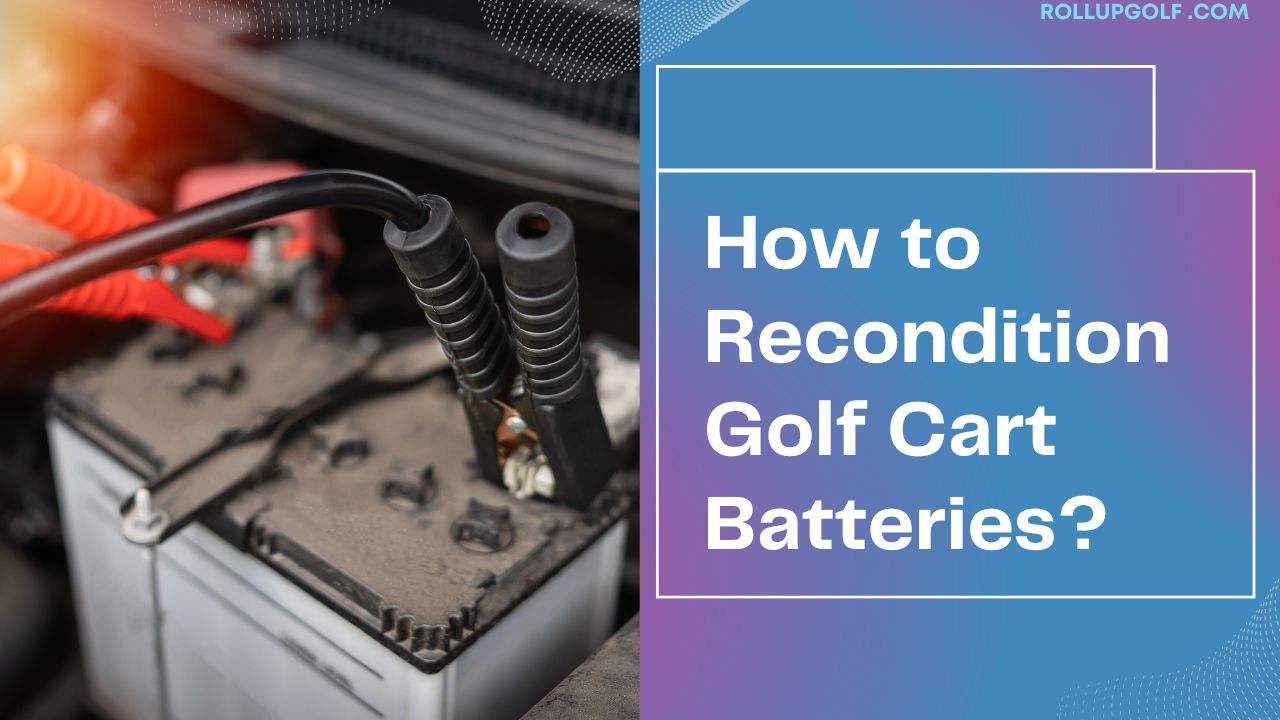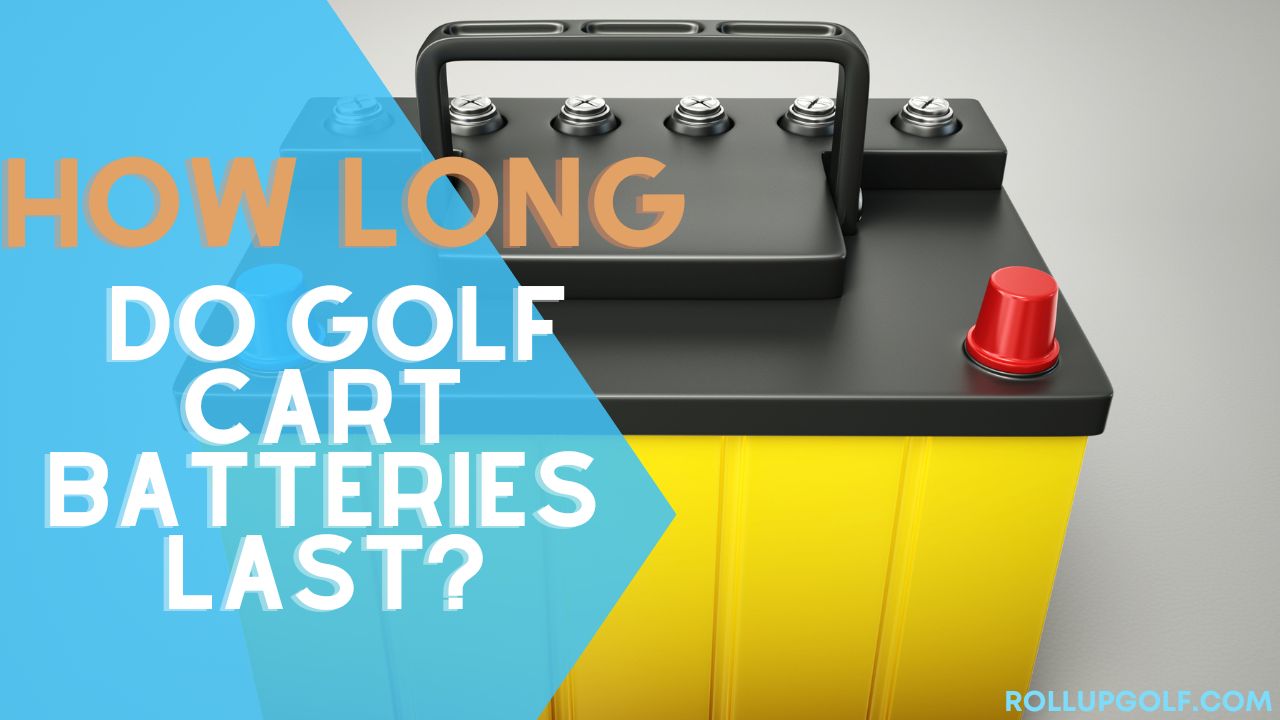
Golf carts are fantastic assets for navigating through golf courses or for utility purposes in various environments. However, their batteries tend to wear out over time, leading to decreased performance and, eventually, replacement. Replacing golf cart batteries can be expensive, but fortunately, there’s a cost-effective solution: reconditioning them. In this guide,
we’ll explore:
- How to Recondition Golf Cart Batteries
- what kills a golf cart battery
- Step-by-Step Guide to Reconditioning Golf Cart Batteries
Understanding Battery Reconditioning
What is battery reconditioning?
Battery reconditioning is the process of restoring the performance and lifespan of old or worn-out batteries. It involves various techniques to revive the battery’s ability to hold charge and deliver power effectively.
Why recondition golf cart batteries?
Reconditioning golf cart batteries not only saves money but also reduces environmental waste by extending the lifespan of the batteries. It’s a sustainable practice that benefits both your wallet and the planet.
Read also: How to be a golf caddy?
How to Recondition Golf Cart Batteries

Reconditioning golf cart batteries involves attempting to restore some life to a weakened battery. It’s important to manage expectations though, as severely degraded batteries may not respond well. Here’s a general process, but be aware there’s some debate about its effectiveness:
Safety First:
- Wear safety glasses and gloves when handling batteries.
- Battery acid is hazardous, so work in a well-ventilated area and have baking soda on hand to neutralize spills.
Materials:
- Wrench (for removing batteries)
- Baking soda and water solution (for cleaning terminals)
- Distilled water
- Epsom salts (magnesium sulfate) (optional – effectiveness debated)
- Battery hydrometer (to measure electrolyte strength) (optional)
- Battery charger
Steps:
-
Prepare the Batteries:
- Remove the batteries from the cart using the wrench.
- Clean the terminals with the baking soda solution and a brush.
-
Check Electrolyte Levels (Flooded Lead-Acid Batteries Only):
- Carefully remove the caps (refer to the battery manual for the proper procedure).
- If the level is low, add distilled water only to bring it just above the plates (not filling).
-
Optional: Epsom Salt Treatment (Effectiveness Debated):
- Mix a solution of 12-15% Epsom salts in distilled water (ensure all salts dissolve).
- Some experts recommend against this, as it might not improve performance.
-
Charging:
- Replace the caps (if applicable) and reconnect the batteries.
- Use a charger specifically designed for golf cart batteries.
- Follow the charger’s instructions for a slow or equalization charge (if available).
Important Notes:
- This process might not be effective for very old or damaged batteries.
- Overcharging can damage batteries, so monitor the charging process.
- Consider the cost of the reconditioning process compared to replacing the battery.
Additional Tips for Extending Battery Life:
- Maintain proper water level (flooded batteries).
- Keep terminals clean and corrosion-free.
- Avoid deep discharges.
- Regularly charge the battery.
- Store the cart in a cool, dry place when not in use.
Remember, reconditioning has mixed success. It might be worth trying on a moderately weak battery, but for severely degraded ones, replacement might be necessary.
Read also: What is Four Ball in Golf?
what kills a golf cart battery
Several things can shorten the lifespan of a golf cart battery, but most of them boil down to improper care and charging habits. Here are the main culprits:
-
Overcharging: Just like with any rechargeable battery, overcharging a golf cart battery cooks it from the inside out. Leaving it on the charger constantly or using a faulty charger can damage the battery and reduce its capacity.
-
Deep discharging: Running the battery down to the point where the cart dies is stressful on the battery. It’s best to recharge when you see the battery meter getting low.
-
Poor maintenance: Golf cart batteries, especially flooded lead-acid batteries, need some TLC. This includes checking the water levels periodically and cleaning any corrosion from the terminals.
-
Leaving accessories on Leaving the radio, lights, or other electrical components on when you’re not using the cart can drain the battery significantly.
-
Extreme conditions: Regularly using your cart in very hot or cold weather can take a toll on the battery’s lifespan.
-
Overuse: While golf carts are designed for everyday use, constantly pushing the cart to its limits by driving long distances or hauling heavy loads can wear down the battery faster.
By following proper charging practices, performing routine maintenance, and using your cart responsibly, you can maximize the life of your golf cart battery.
Read also: Golf ball
golf cart battery restores liquid

Golf cart battery restore liquids are solutions marketed to extend the life of golf cart batteries. They claim to work by breaking down sulfate buildup on the battery plates, which can impede battery performance.
There is some debate about the effectiveness of these products. Some battery experts believe that they can be helpful in certain situations, while others believe that they are a waste of money.
Here are some things to consider before you decide to use a golf cart battery restore liquid:
- The age and condition of your battery: If your battery is very old or already significantly damaged, a battery restore liquid is unlikely to be effective.
- The severity of the sulfation: Battery restore liquids are most effective at removing mild to moderate sulfation. If your battery has severe sulfation, you may be better off replacing the battery.
- The cost of the battery restore liquid compared to the cost of a new battery: If the battery restore liquid is expensive, it may be more cost-effective to simply replace the battery.
If you do decide to use a golf cart battery to restore liquid, it is important to follow the directions carefully. These products can be dangerous if not used properly. It is also important to be realistic about your expectations. Battery restore liquids are not a miracle cure, and they will not bring a dead battery back to life.
Here are some additional tips for extending the life of your golf cart battery:
- Maintain the proper water level in flooded lead-acid batteries.
- Keep the battery terminals clean and free of corrosion.
- Avoid letting the battery completely discharge.
- Charge the battery regularly, even if you are not using the golf cart very often.
- Store the golf cart in a cool, dry place when it is not in use.
Read also: Are Golf Pants Business Casual?
Tools and Materials Needed for Reconditioning Golf Cart Batteries
Essential tools
Before starting the reconditioning process, gather the following tools:
- Safety goggles and gloves
- Battery hydrometer
- Battery charger
- Distilled water
- Baking soda
- Wire brush
- Voltmeter
Required materials
Additionally, you’ll need the following materials:
- Epsom salt
- Battery terminal cleaner
- Battery post cleaner
Safety Precautions Before Starting
Importance of safety measures
Safety should always be a top priority when working with batteries. Ensure proper ventilation in the workspace and wear protective gear, including gloves and goggles, to prevent accidents.
Protective gear required
Protective gear such as gloves and goggles shields you from harmful chemicals and prevents accidents like acid splashes.
Step-by-Step Guide to Reconditioning Golf Cart Batteries

Tips and Tricks for Successful Reconditioning
Maintenance tips
Regularly check and maintain your golf cart batteries to prevent premature wear. Keep them clean and properly charged to maximize their lifespan.
Avoiding common mistakes
Avoid overcharging or undercharging your batteries, as this can damage them. Follow the recommended charging procedures and handle the batteries with care.
Benefits of Reconditioning Golf Cart Batteries
Reconditioning golf cart batteries offers several compelling benefits, making it a worthwhile practice for golf cart owners. Here are some of the key advantages:
1. Cost-effectiveness
Replacing golf cart batteries can be a significant expense. However, reconditioning them is a cost-effective alternative. By restoring the performance of old or worn-out batteries, you can avoid the hefty cost of purchasing new ones.
2. Extended Lifespan
Reconditioning can significantly extend the lifespan of golf cart batteries. Instead of discarding batteries prematurely due to diminished performance, reconditioning allows you to breathe new life into them, ensuring they continue to function effectively for a longer period.
3. Environmentally Friendly
Reconditioning batteries aligns with environmentally friendly practices by reducing waste. Rather than disposing of old batteries, which can harm the environment, reconditioning allows you to reuse them, minimizing the need for new battery production and reducing environmental impact.
4. Improved Performance
Over time, golf cart batteries can lose their ability to hold a charge and deliver power effectively. Reconditioning helps reverse this decline by removing sulfate buildup and restoring the battery’s capacity. This results in improved performance and reliability on the golf course or wherever the cart is used.
5. Sustainable Practice
Reconditioning golf cart batteries is a sustainable practice that promotes resource conservation. By maximizing the lifespan of existing batteries, you reduce the demand for new ones, conserving natural resources and reducing energy consumption associated with battery manufacturing.
6. Customization Potential
Reconditioning allows you to customize your batteries to suit your specific needs. By understanding the reconditioning process, you can tailor it to address specific issues or optimize performance based on your usage requirements.
7. Educational Opportunity
Engaging in battery reconditioning provides an educational opportunity to learn about battery chemistry, maintenance practices, and sustainable solutions. This knowledge can empower you to take better care of your batteries and make informed decisions regarding their maintenance and usage.
8. Reduced Downtime
When a golf cart battery fails, it can result in downtime and inconvenience. Reconditioning allows you to quickly revive batteries that may have otherwise rendered the cart inoperable. This minimizes disruptions and ensures continued use without significant delays.
9. Flexibility
Reconditioning golf cart batteries offers flexibility in managing your battery inventory. Instead of being reliant on purchasing new batteries when needed, you can recondition existing ones as required, giving you greater control over your maintenance schedule and budget.
10. Community Engagement
Embracing battery reconditioning fosters community engagement by sharing knowledge and resources with others. Whether through online forums, local workshops, or informal discussions, participating in the reconditioning community can lead to valuable exchanges and collaborative problem-solving.
In conclusion, the benefits of reconditioning golf cart batteries are substantial, ranging from cost savings and environmental sustainability to improved performance and educational opportunities. By incorporating reconditioning into your battery maintenance routine, you can maximize the lifespan of your batteries while minimizing your ecological footprint.
Conclusion
Reconditioning golf cart batteries is a cost-effective and sustainable way to extend their lifespan and save money. By following the step-by-step guide and implementing the tips provided in this article, you can effectively recondition your batteries and enjoy improved performance on the golf course or wherever your cart takes you.
FAQs
- How often should I recondition my golf cart batteries?
- It depends on various factors such as usage and maintenance. Generally, reconditioning every 6-12 months can help maintain battery health.
- Can I use tap water instead of distilled water for reconditioning?
- It’s not recommended. Tap water may contain impurities that can affect the battery’s performance. Stick to distilled water for best results.
- What should I do if my battery doesn’t hold a charge after reconditioning?
- If the battery doesn’t hold a charge after reconditioning, it may be beyond repair and require replacement. Consult a professional for further assistance.
- Is battery reconditioning safe for beginners?
- With proper safety precautions and guidance, battery reconditioning can be safe for beginners. However, it’s essential to follow instructions carefully to avoid accidents.
- Can I recondition lithium-ion batteries using the same process?
- No, lithium-ion batteries require different reconditioning techniques and should be handled by professionals familiar with their specific requirements.








